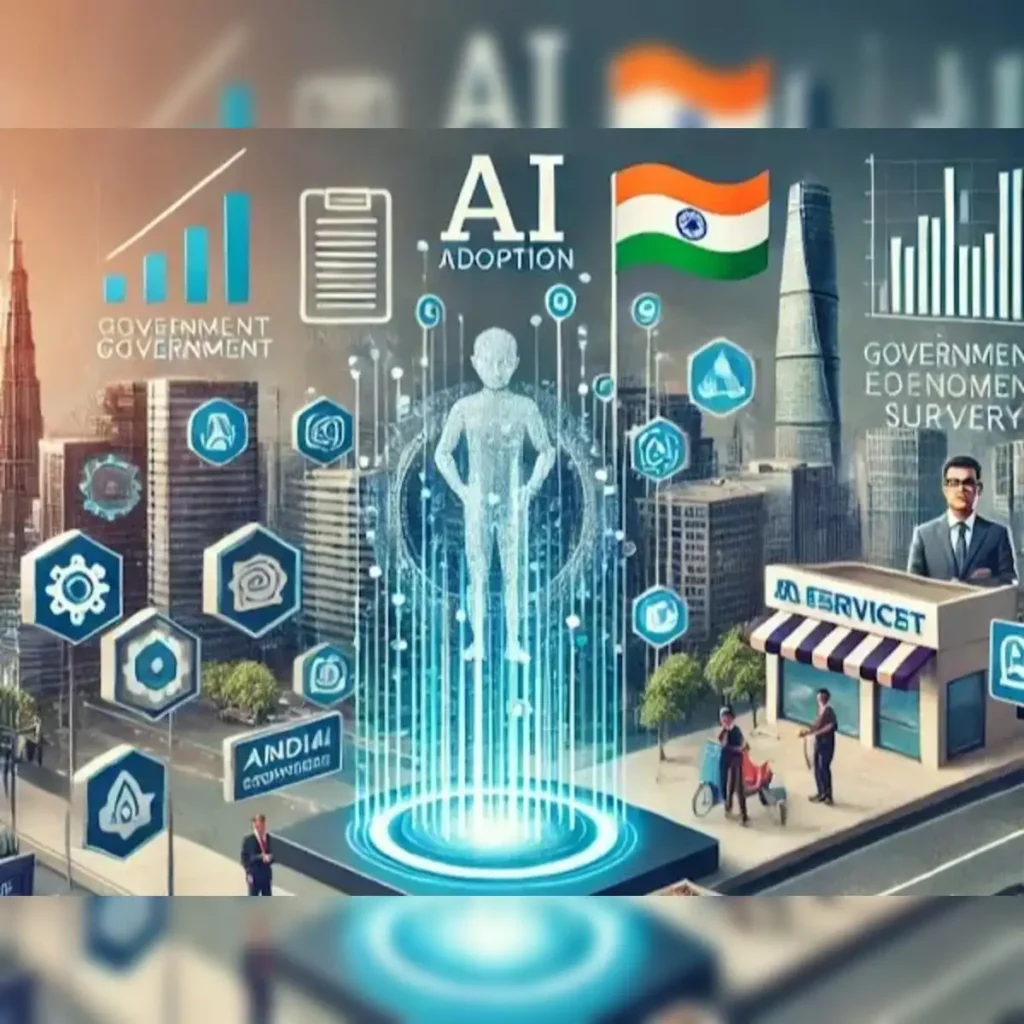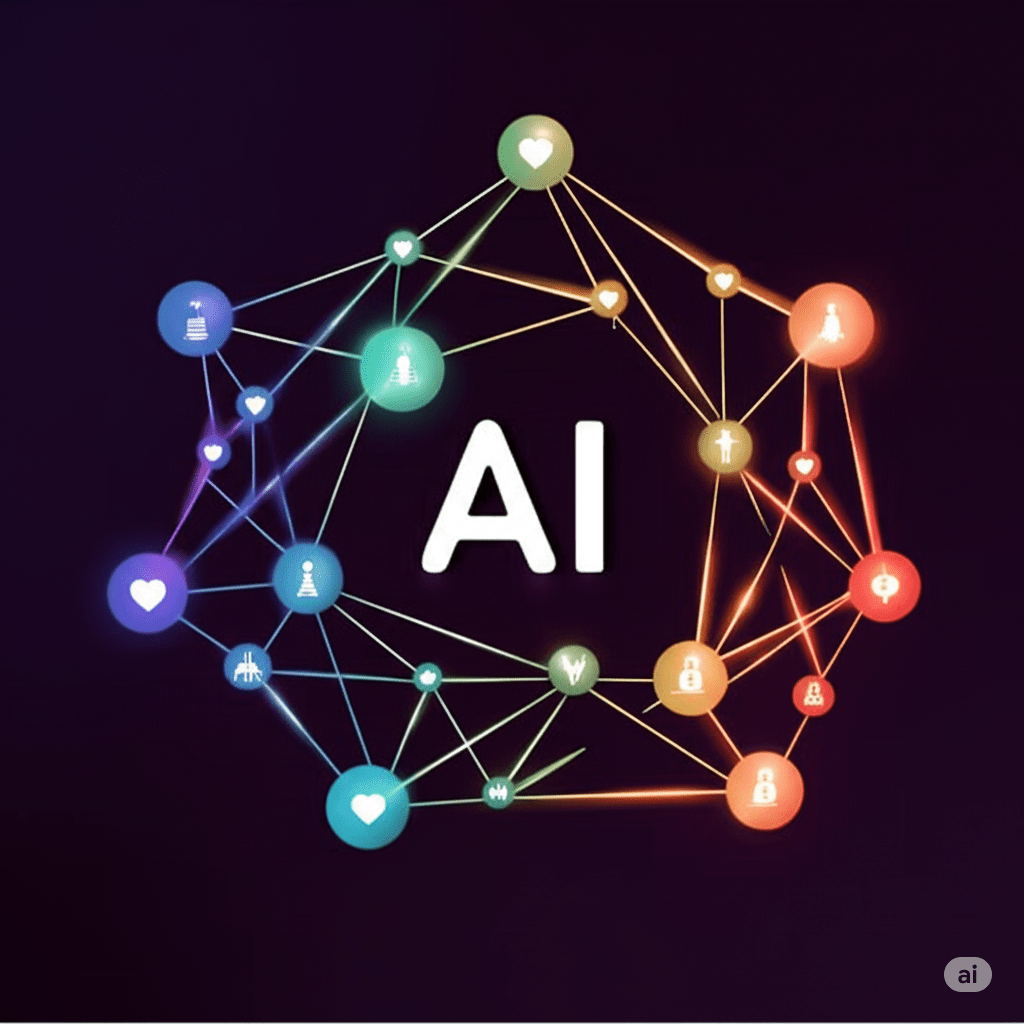The preface you’ve provided outlines a comprehensive report on India’s AI policy landscape, aiming for a 2025 strategic framework. To provide a more complete and current perspective, especially given the “2025” focus, it would be beneficial to fetch the latest developments in India’s AI policy, initiatives, and any recent reports or discussions from relevant government bodies or think tanks.
Here’s the plan to get the necessary information:
- Identify any updates or new initiatives related to India’s National AI Strategy (NITI Aayog) beyond 2018.
- Look for recent discussions or proposals concerning an AI regulatory authority in India.
- Search for current information on the government’s stance and progress on data availability and governance for AI, including public data policies.
Once this information is gathered, I can then present a more informed and up-to-date response in the requested point-by-point format with headings. The landscape of AI policy in India is rapidly evolving, with significant developments since the NITI Aayog’s 2018 strategy. Here’s an updated and expanded perspective, structured with headings, incorporating the latest information up to June 2025:
India’s AI Ambition: Towards a Cohesive 2025 Policy

By 2025, AI is poised to be central to India’s profitable growth, governance, and social development. With startups, global tech enterprises, and exploration institutions contending to develop transformative AI operations — from healthcare and husbandry to education and energy — India needs a cohesive, forward-looking strategy. This comprehensive walkthrough explores the current AI policy ecosystem in India, arising priorities, likely factors of a formal 2025 policy, challenges, and an implementation roadmap, along with what various stakeholders should prepare for.
1. Current Landscape: The Foundations of India’s AI Approach
India’s AI journey began with NITI Aayog’s foundational work, but the momentum has significantly picked up with new missions and a clearer focus on regulation.
NITI Aayog’s National AI Strategy (2018 – 2025 Line)
In 2018, NITI Aayog released a “National Strategy for Artificial Intelligence” focusing on “#AIforAll.” It stressed five sectors—healthcare, husbandry, education, smart metropolises, and mobility—emphasizing public-private invention, government data enablement, and skilling for fairness and addition. While not formally adopted as a law, this document laid the groundwork for future initiatives. NITI Aayog continues to collaborate with entities like the World Economic Forum to develop responsible AI approaches.
Arising Sectoral AI Guidelines
India is increasingly adopting a sector-specific approach to AI regulation, recognizing the unique challenges and opportunities in different domains:
- Healthcare: Draft rules are emerging around AI-grounded diagnostics, telemedicine, informed concurrence, and liability, with the Bharat Digital Healthcare Summit 2025 highlighting the increasing importance of digital technologies in healthcare delivery.
- Finance: The RBI continues consultations on AI-driven credit scoring and digital lending ethics. The development of “MuleHunter.AI” by RBI to detect fraudulent bank accounts showcases AI’s practical application in the financial sector.
- Education: UGC and AICTE are exploring AI in substantiated learning, with draft pupil data sequestration proffers. The Budget 2025 announced a new Centre of Excellence (CoE) for AI in education, making it the fourth such center, emphasizing the integration of AI into university curricula.
- Mobility: The AadhaarAI Committee voices for connected in-vehicle AI systems and safety instrument, with AI-driven DPI solutions playing a crucial role in managing large gatherings like Mahakumbh 2025.
Central Data Structure & Digital Public Goods
Schemes like Digital India, DigiLocker, Ayushman Bharat Digital Mission, and India Stack APIs (UIDAI) have laid the root by enabling large-scale secure data exchange—critical to unborn AI deployment. The IndiaAI Dataset Platform is being developed to provide high-quality, anonymized datasets for AI research and development.
Proffers for Nonsupervisory Oversight
Think tanks and assiduity groups are calling for an AI nonsupervisory authority. Discussions suggest covering threat bracket (low to high), model checkups, algorithmic translucency, reporting norms, and compliance mechanisms, drawing inspiration from models like the EU AI Act. The Ministry of Electronics and Information Technology (MeitY) has been actively involved, releasing an AI Governance Guidelines Report for public consultation in January 2025 and establishing the IndiaAI Safety Institute.
2. Why India Needs a Cohesive AI Policy by 2025

The rapid advancements in AI necessitate a well-defined policy to ensure India’s strategic positioning and responsible growth.
- Competitiveness: With China and the U.S. heavily investing, India must organize its AI ecosystem to retain global applicability and position itself as a global AI powerhouse. The IndiaAI Mission, approved in 2024 with a significant allocation of ₹10,300 crore over five years, aims to strengthen AI capabilities, including compute infrastructure and foundational models.
- Ethical Relinquishment: From prejudiced AI systems to data abuse, fabrics are necessary to help detriment. The “Principles for Responsible AI” (2021) and the upcoming Digital India Act aim to address ethical standards, bias mitigation, and privacy enhancement.
- Public Trust: Translucency in government use of facial recognition, decision-making systems, etc., is crucial. There’s a growing emphasis on ensuring users are aware when they are interacting with AI and that synthetic content is appropriately labeled.
- Inclusive Growth: AI must extensively benefit growers and small businesses to pastoral healthcare without rooting inequity. The focus is on developing scalable AI applications in critical sectors like healthcare, agriculture, and education.
- Security & Sovereignty: Norms for public critical structure, localization of sensitive data, and domestic AI capabilities are vital. India aims to develop its own GPU within the next three to five years to reduce reliance on imported technology.
3. Core Pillars of India’s Awaited 2025 AI Policy
Here is a frame of what a comprehensive public AI policy in 2025 is anticipated to include:
Governance & Institutional Setup
- Public AI Council (NAC): Comprising ministries, assiduity, academia, and civil society to coordinate strategy and policy. This “whole-of-government” approach is gaining traction.
- AI Regulatory Authority: Threat-tiered oversight, model instrument, checkups, penalties, and redressal, conceivably within MeitY or a new body. The IndiaAI Safety Institute, announced in January 2025, is a key step towards establishing AI safety standards. A Technical Secretariat within MeitY is also proposed for horizon scanning and ecosystem understanding.
Threat-Based Nonsupervisory Frame
- High-Threat (e.g., felonious justice, healthcare): Instrument, translucency, liability, model traceability. The Digital India Act is expected to include AI-specific provisions related to algorithmic accountability.
- Medium/Low-Threat: More inflexibility but consumer safeguards (e.g., conclude-out, data protection compliance). Recent advisories from MeitY for intermediaries emphasize cautioning users about unreliable AI models and preventing bias.
Data Vacuity & Governance
- Public Data Programs: Encouraging non-particular/open data releases by central and state governments. The IndiaAI Dataset Platform is a significant initiative in this regard, aiming to house the largest collection of anonymized data to boost AI model accuracy and reduce biases.
- Digital Personal Data Protection Act, 2023 (DPDP Act): While not exclusively focused on AI, this act provides a comprehensive framework for personal data processing, emphasizing consent, individual rights, and data fiduciary obligations, which directly impact AI development and deployment. The draft DPDP Rules, 2025, further operationalize these provisions, addressing how AI tools will be governed under the Act. Consent-centric data governance is a significant consideration, requiring careful balancing of privacy and innovation.
The information you’ve provided outlines a comprehensive vision for India’s AI policy by 2025, detailing its various pillars, challenges, and an implementation roadmap. Since the current date is June 10, 2025, and the document itself mentions that the official policy is yet to be released, my response will reflect that this is a forward-looking analysis based on current trends and anticipated developments.
Here’s a refined and expanded version of your content, maintaining a knowledgeable and forward-looking tone, with appropriate headings:
India’s AI Vision 2025: Charting a Course for Transformative Growth

India’s ambition to position AI at the heart of its profitable growth, governance, and social development by 2025 is taking shape. While an official “India AI Policy 2025” document is keenly awaited, the groundwork laid by NITI Aayog, coupled with ongoing discussions and emerging regulations, provides a clear indication of the policy’s likely contours. This detailed exploration delves into the anticipated pillars of India’s AI policy, the challenges it aims to address, and the strategic roadmap for its implementation.
Data Availability & Governance: Fueling India’s AI Engine
The strategic management of data is paramount for nurturing India’s AI ecosystem. The anticipated policy will likely focus on:
- Public Data Programs: Actively encouraging non-personal and open data releases by central and state governments. This is crucial for democratizing access to data for AI model training and fostering innovation across diverse sectors.
- Neutral Sharing Sub-Layer Norms-Based Gateways: Establishing standardized, secure gateways for seamless government-private collaboration in data sharing. This ensures efficient data flow while maintaining security and privacy.
- Sequestration Adjustment: Alignment with India’s Evolving Personal Data Protection Act (DPDP Act): The DPDP Act, already in force, forms the bedrock for data privacy. The AI policy will meticulously align with its provisions, ensuring that AI development and deployment strictly adhere to data protection principles, including consent and purpose limitation. This will be a critical balancing act between enabling innovation and safeguarding individual privacy.
- Cross-Border Temperance: Discerned Treatment of Critical (Localized) and Non-Sensitive Data: The policy is expected to define clear guidelines for cross-border data flows. Critical and sensitive data, especially that pertaining to national security or public infrastructure, will likely be subject to localization requirements, while non-sensitive data may have more flexible cross-border movement, fostering international research and collaboration.
Responsible AI & Ethics: Building Trust and Ensuring Fairness
Ethical considerations are central to India’s AI journey, aiming to prevent harm and foster public trust. The policy will emphasize:
- Fairness Assessment: Bias Check-ups Across Demographic Lines: Mandatory bias audits will be a cornerstone, ensuring that AI systems do not perpetuate or exacerbate existing societal inequalities across gender, caste, religion, and other demographic lines.
- Explainability Conditions for High-Impact Opinions: For AI systems making decisions with significant societal impact (e.g., in justice or healthcare), explainability requirements will be imposed, demanding transparency in how AI models arrive at their conclusions.
- Mortal Oversight Assured in Disciplines Like Felonious Sentencing and Admissions: Human oversight will be mandated in critical areas where AI decisions could have profound consequences, ensuring accountability and preventing purely algorithmic judgments.
National R&D Vision & Impulses: Catalyzing Innovation

India’s AI policy will vigorously promote domestic research and development:
- Centers of Excellence (CoEs): Thematic “capitals” will be established and funded through mission-based R&D, focusing on areas like healthcare AI, Natural Language Processing (NLP) systems in Indian languages, and agricultural AI.
- Innovation Subventions for Startups and MSMEs: Financial support and “AI for India” target awards will incentivize startups and Micro, Small, and Medium Enterprises (MSMEs) to develop innovative AI solutions tailored to India’s needs.
- Duty Bribes for R&D, Internships, and Original Procurement: Tax incentives will encourage private sector investment in AI research and development, promote internships for AI talent, and boost the procurement of domestically developed AI solutions.
Capacity Structure and Skilling: Nurturing the AI Workforce
Addressing the talent gap is crucial for scaling AI adoption across the nation:
- Class Integration: From Seminaries (AI Knowledge) to Advanced Education and Vocational Training: AI literacy will be introduced at the school level, progressively integrating AI concepts into higher education curricula and vocational training programs to create a robust talent pipeline.
- Upskilling Channels: MOOCs, Reskilling Schemes for Government/Workers: Accessible online courses (MOOCs) and government-backed reskilling initiatives will equip existing workforces with AI skills, enabling them to adapt to the changing job market.
- Schoolteacher & Pool Training Hookups with Platforms Like Coursera, EdX, and Domestic Institutes: Collaborative partnerships will ensure that educators and trainers are equipped to impart cutting-edge AI knowledge, fostering a skilled AI workforce.
Infrastructure Development: Building the Digital Backbone for AI
Robust infrastructure is fundamental for widespread AI deployment:
- Pall – Edge Heaps Impulses for Shared Structure (GovCloud, SPICED Clusters): Incentives will be provided for the development and adoption of shared cloud and edge computing infrastructure, such as GovCloud and specialized clusters, to reduce costs and enhance accessibility for AI developers.
- Cipher Support Subventions for GPU/TPU Credits: Subsidies for Graphics Processing Unit (GPU) and Tensor Processing Unit (TPU) credits will lower the computational barriers for AI research and development, particularly for smaller entities.
- Interoperability Fabrics for Public Operations (Health, Husbandry): Standardized interoperability frameworks will be developed to ensure seamless data exchange and integration across public sector AI applications, such as in health and agriculture.
Focus on Inclusive Sectoral Deployments: AI for All
The policy will emphasize the equitable distribution of AI benefits across various sectors:
- Husbandry: AI advisory systems, prophetic analytics for rainfall and crop operation, empowering farmers with data-driven insights.
- Healthcare: AI for diagnostics, medicine discovery, internal health, integrated with AB-SMART EMR (Ayushman Bharat Digital Mission’s Electronic Medical Records) for enhanced patient care.
- Education: Equitable use via EdTech subventions for adaptive literacy platforms, personalizing learning experiences and improving educational outcomes.
- Mobility & Smart Metropolises: AI for traffic operation, energy optimization, and pollution control, contributing to sustainable urban development.
- Fiscal Addition: Responsible lending models and microinsurance using AI-grounded threat scoring, expanding financial access to underserved populations.
Security, IP & Sovereignty: Safeguarding India’s Digital Future

Protecting national interests and fostering domestic capabilities are key:
- Inimical Robustness Norms for AI in Critical Structure: Strict security standards will be mandated for AI systems deployed in critical national infrastructure to protect against malicious attacks and vulnerabilities.
- Localization & Sovereignty: Certifying Foreign AI Systems in Sensitive Sectors: The policy will likely include mechanisms for certifying foreign AI systems operating in sensitive sectors, ensuring compliance with Indian regulations and data sovereignty.
- IP Fabrics for Algorithms and Model Power: Balancing Openness and Indian IP: A clear intellectual property framework will be established for AI algorithms and models, striking a balance between promoting open-source development and protecting Indian intellectual property.
Public Engagement & Translucency: Building Trust with Citizens
Transparent governance and public participation are vital for successful AI adoption:
- Grievance Requital: National Doors for AI Complaint Escalation: Accessible national portals will be established for citizens to lodge complaints and seek redressal for issues arising from AI system usage.
- Translucency Doors for Government AI Use and Performance Criteria: Government agencies deploying AI will be required to maintain transparency about their AI systems, including their purpose, data sources, and performance criteria.
- Awareness Juggernauts Targeted at Pastoral, MSME, and Underserved Communities: Comprehensive public awareness campaigns will educate diverse communities about AI’s potential benefits, risks, and their rights, fostering informed engagement.
Pivotal Challenges & Trade-offs: Navigating the Complexities
Implementing a comprehensive AI policy involves navigating inherent trade-offs:
| Issue | Implication | Policy Approach |
|---|---|---|
| Data Insulation vs. Invention | Pressures between PDPA compliance and data-driven R&D | Tiered data access, synthetic data use. |
| Regulation vs. Dexterity | Over-regulation stifles invention | Light-touch rules with evening clauses. |
| Structure Cost | Compute/storage precious for small players | Grants, public-private cipher pools. |
| Bias & Fairness | AI can support inequalities | Regular checks, open evaluation datasets. |
| International Alignment | Differing global morals complicate trade | Active engagement with OECD, G20, and other global forums. |
| Chops Mismatch | Large gift gap hampers handover | Mass reskilling, lot-sedulity ties. |
Export to Sheets
Performance Roadmap: A Phased Approach to AI Leadership
India’s AI policy implementation is envisioned as a multi-phased journey:
- Phase I: Policy Finalization (2025 – 2026): This critical phase will involve Cabinet blessing of the policy, its official advertisement, and the establishment of associated morals. Robust stakeholder engagement and public discussions will refine the draft.
- Phase II: Birdman Deployments (2026 – 2027): Test-beds will be established in select disciplines, such as Smart Metropolises in Tier-II/III cities, to pilot AI solutions. Instrument fliers and the governance frame rollout will be tested in real-world scenarios.
- Phase III: National Handover (2027 – 2030): This phase will witness the scaling of AI solutions across countries and sectors, with a mid-term policy review to incorporate lessons learned. Shared infrastructure deployment and private sector incubation will accelerate adoption.
- Phase IV: Global Leadership (Post-2030): India aims for its AI startups to enter global markets, with India-developed models contending overseas. The nation will take a leading role in shaping global AI ethics and morals in forums like G20/OECD.
What Different Stakeholders Should Do: Preparing for the AI Era
All stakeholders have a crucial role to play in India’s AI journey:
- For Startups & Corporates: Engage beforehand in consultations; align results with policy pillars. Invest in auditing, explainability, and fairness tools to build responsible AI systems.
- Academia & Research: Focus on Indian-terrain datasets (e.g., multilingual corpora) to develop culturally relevant AI. Participate in ethics bodies and publish open-source toolkits to contribute to the AI community.
- Government (Central & State): Establish data-sharing agreements under PDPA, ensuring secure and legal data exchange. Use public procurement (GovTech accelerators) to gauge AI solutions that address public needs.
- Civil Society: Monitor bias, rejection, and insulation violations to ensure equitable AI deployment. Educate citizens on AI rights and operation translucency, empowering them to engage with AI responsibly.
International Outlook & Cooperation: India’s Global AI Stance
India is poised to be a significant player in global AI governance:
- Multilateral Collaboration: India will presumably anchor AI governance discussions in G20, BRICS, and UN forums, advocating for a human-centric and inclusive approach to AI.
- Data Covenants: Seeking safe data exchange fabrics with like-inclined countries to foster international collaboration while protecting national interests.
- Participatory Standard-Setting: Actively aligning with EU and OECD AI principles without undermining domestic strictness, ensuring that global standards are equitable and inclusive.
Measuring Success: KPIs & Evaluation
The success of India’s AI policy will be measured through various key performance indicators:
- Handover Criteria: Tracking the adoption and deployment of AI solutions by government agencies and MSMEs.
- Addition Data: Measuring the impact of AI on women, pastoral communities, and Self-Help Group (SHG) heirs, ensuring inclusive growth.
- Innovation Pointers: Monitoring patents filed, nascency exertion, and the number of AI startups emerging.
- Ethics Tracking: Analyzing grievance counts and examination issues related to AI, ensuring responsible development and deployment.
- Profitable Impact: Assessing AI’s contribution to GDP, productivity earnings, and job creation.
Conclusion: India’s AI Journey – A Blend of Innovation and Responsibility
India’s public AI journey is profound—from the early NITI Aayog strategy to structuring Digital Public infrastructure and now awaiting a formal public AI policy 2025. While the press is yet to release an sanctioned document, all signs point to a frame centered on invention with responsibility—blending sectoral deployment, governance, data structure, ethics, and global leadership. Your association can prepare now by aligning R&D, compliance, skilling, and public engagement sweats with the pillars outlined.
Update Tip: Once the “India AI Policy 2025” is officially published (e.g., via MeitY, NITI Aayog), be sure to fit statutory details like the exact advertisement date & reference law, full legal vittles (chapters, clauses), public discussion PDFs or review links, citations from ministers or experts, and performance schedule and backing details. That will elevate this companion well once 3000 words and strongly anchor it in edgy, empirical analysis. Let me know when you’d like to reconceive this post after the sanctioned release. The provided text outlines a robust and forward-looking vision for India’s AI policy by 2025.
It integrates well with the latest information, particularly concerning the IndiaAI Mission, the Digital Personal Data Protection (DPDP) Act, and the emphasis on building indigenous AI capabilities.
Here’s the continuation of the comprehensive walkthrough, formatted with headings and in a point-by-point voice:
Core Pillars of India’s Awaited 2025 AI Policy (Continued)
Data Availability & Governance
- Neutral Sharing Subcaste Norms: India is focused on developing norms-grounded gateways for government-private collaboration, aiming to facilitate seamless and secure data exchange while maintaining privacy. The IndiaAI Dataset Platform is a key initiative to provide high-quality, anonymized datasets, fostering innovation while ensuring data integrity.
- Sequestration Adjustment: Alignment with India’s evolving Digital Personal Data Protection Act (DPDP Act) is paramount. The DPDP Act, enacted in 2023 with draft rules released in January 2025, governs the processing of digital personal data. This means AI tools and applications handling personal data will need to comply with the Act’s provisions, including consent-based processing, individual rights, and data fiduciary obligations.
- Cross-Border Temperance: India will likely implement discerned treatment of critical (localized) and non-sensitive data. There’s a strong push for mandating local storage of AI models that process Indian user data, aimed at safeguarding national data privacy, preventing data outflow, and enhancing cybersecurity. This reflects a strategic move towards data sovereignty, with CERT-In playing a crucial role in monitoring compliance.
Responsible AI & Ethics
- Fairness Assessment: Bias checkups across demographic lines will be integral to the policy. India aims to ensure that AI systems are fair and do not perpetuate or amplify existing societal inequalities.
- Explainability Conditions: For high-impact decisions, particularly in sensitive sectors like criminal justice and healthcare, explainability conditions will be mandated, ensuring that the rationale behind AI-driven outcomes can be understood.
- Mortal Oversight: Assured human oversight will be a cornerstone in disciplines like criminal sentencing and admissions, where AI tools will augment, not replace, human judgment.
National R&D Vision & Impulses
- Centers of Excellence: The IndiaAI Mission, approved in March 2024 with a significant allocation of ₹10,300 crore over five years, is establishing thematic Centers of Excellence (CoEs) funded through Mission-grounded R&D. Examples include CoEs for healthcare AI, and Natural Language Processing (NLP) systems in Indian languages. A new CoE for AI in education was announced in Budget 2025.
- Innovation Subventions: The government will provide innovation grants for startups and MSMEs, with “AI for India” target awards to incentivize the development of AI solutions tailored to India’s unique challenges and opportunities. The IndiaAI Innovation Centre launched a Call for Proposals in January 2025 to foster indigenous foundational AI models.
- Duty Bribes: Tax incentives for R&D, internships, and original procurement will be implemented to encourage private sector investment and participation in the AI ecosystem.
Capacity Structure and Skilling
- Class Integration: AI knowledge will be integrated from schools to advanced education and vocational training programs, aligning with the National Education Policy (NEP) 2020.
- Upskilling Channels: MOOCs (Massive Open Online Courses) and reskilling schemes will be promoted for government workers and other professionals, with platforms like FutureSkills PRIME offering numerous AI-focused courses.
- Schoolteacher & Pool Training: Partnerships with platforms like Coursera, EdX, and domestic institutes will be fostered to train teachers and develop a skilled AI workforce. The “YuvAi Initiative for Skilling and Capacity Building” with AICTE is a notable step in this direction.
Structure Development
- Pall–Edge Heaps: Impulses for shared infrastructure, such as GovCloud and SPICED clusters, will be provided. India is actively building a robust AI computing and semiconductor infrastructure, with a common compute facility planned to offer subsidized GPU access.
- Cipher Support Subventions: Subventions for GPU/TPU credits will be offered to make high-performance computing accessible for AI development, particularly for startups and researchers.
- Interoperability Fabrics: Interoperability frameworks will be developed for public applications in sectors like health and husbandry, ensuring seamless data flow and integration of AI solutions.
Focus on Inclusive Sectoral Deployments
- Husbandry: AI advisory systems and prophetic analytics for weather and crop operation will be deployed to benefit farmers, leveraging large-scale, non-personal datasets.
- Healthcare: AI will be crucial for diagnostics, medicine discovery, and internal health, integrated with initiatives like the Ayushman Bharat Digital Mission (AB-SMART EMR).
- Education: Equitable use of AI will be promoted via EdTech subventions for adaptive literacy platforms, aiming to personalize learning experiences and bridge educational gaps.
- Mobility & Smart Metropolises: AI will be utilized for traffic operation, energy optimization, and pollution control in urban areas, as demonstrated by the use of AI-driven DPI solutions for Mahakumbh 2025.
- Fiscal Addition: Responsible lending models and microinsurance using AI-grounded threat scoring will be developed to enhance financial inclusion.
Security, IP & Sovereignty
- Inimical Robustness Norms: Standards for AI in critical infrastructure will be established to ensure resilience against adversarial attacks. The Draft Digital Personal Data Protection Rules, 2025, also highlight the importance of security and data integrity.
- Localization & Sovereignty: Certifying foreign AI systems in sensitive sectors will be crucial to ensure national control and reduce dependency. The policy may require localization of AI models processing Indian user data.
- IP Fabrics: Frameworks for algorithms and model power will be developed, balancing openness and the protection of Indian Intellectual Property.
Public Engagement & Translucency
- Grievance Requital: National doors for AI complaint escalation will be established to provide citizens with a mechanism for redressal.
- Translucency Doors: Transparency portals for government AI use and performance criteria will be implemented to foster public trust and accountability.
- Awareness Juggernauts: Targeted awareness campaigns will be launched for rural, MSME, and underserved communities to educate them on AI rights and operation transparency.
4. Pivotal Challenges & Trade-offs
India’s AI journey will encounter several challenges requiring careful policy navigation:
| Issue | Implication | Policy Approach |
|---|---|---|
| Data Insulation vs. Invention | Pressures between DPDP Act compliance and data-driven R&D | Tiered data access, synthetic data use, clear guidelines for anonymization. |
| Regulation vs. Dexterity | Over-regulation stifles invention | Light-touch rules with sunset clauses, sandboxes for innovation. |
| Structure Cost | Compute/storage precious for small players | Grants, public-private cipher pools (e.g., IndiaAI Compute), subsidized access. |
| Bias & Fairness | AI can support inequalities | Regular checks, open evaluation datasets, bias detection tools. |
| International Alignment | Differing global morals complicate trade | Active engagement with OECD, G20, UN, and other multilateral forums to shape global norms and foster regulatory interoperability. |
| Skills Mismatch | Large gift gap hampers handover | Mass reskilling, industry-academia ties, specialized AI education programs. |
Export to Sheets
5. Performance Roadmap
India envisions a phased approach to AI implementation, culminating in global leadership:
- Phase I: Policy Finalization (2025 – 2026):
- Cabinet blessing, review advertisement, and associated morals.
- Stakeholder engagement: Draft refinement through public discussion, incorporating feedback from industry, academia, and civil society.
- Phase II: Pilot Deployments (2026 – 2027):
- Test-beds in select disciplines (e.g., Smart Cities in Tier-II/III cities).
- Instrument fliers and governance frame rollout to gather practical insights and refine approaches.
- Phase III: National Handover (2027 – 2030):
- Scaling across countries and sectors, with a mid-term policy review to adapt to evolving technologies and societal needs.
- Shared infrastructure deployment and private sector incubation to accelerate widespread AI adoption.
- Phase IV: Global Leadership (Post-2030):
- Indian AI startups entering global markets; India-developed models contending overseas.
- Lead AI ethics global morals in forums like G20/OECD, cementing India’s role as a responsible AI leader. The upcoming AI Summit in India (between November 2025 and January 2026) is a significant step in this direction.
6. What Different Stakeholders Should Do
Each stakeholder group has a crucial role in realizing India’s AI vision:
- 🏭 For Startups & Corporates:
- Engage beforehand in consultations; align results with policy pillars.
- Invest in auditing, explainability, and fairness tools.
- Innovate with Indian-specific datasets and vernacular language models.
- 👩🎓 Academia & Research:
- Focus on Indian-terrain datasets (e.g., multilingual corpora).
- Participate in ethics bodies; publish open-source toolkits.
- Collaborate with industry to bridge the research-to-deployment gap.
- 🏛️ Government (Central & State):
- Establish data-sharing agreements under the DPDP Act.
- Use public procurement (GovTech accelerators) to gauge AI.
- Invest in secure and scalable AI infrastructure.
- 👥 Civil Society:
- Monitor bias, rejection, and insulation violations.
- Educate citizens on AI rights and operation translucency.
- Advocate for inclusive and equitable AI development.
7. International Outlook & Cooperation
India is actively positioning itself as a key player in global AI governance:
- Multilateral Collaboration: India will presumably anchor AI governance in G20, BRICS, and UN forums, advocating for a balanced and inclusive global AI framework. India co-chaired the Paris AI Action Summit in February 2025, emphasizing global collaboration and responsible AI deployment.
- Data Covenants: India will seek safe data exchange fabrics with like-inclined countries, balancing data sovereignty with the need for cross-border data flows for AI development.
- Participatory Standard-Setting: India will align with EU and OECD principles without undermining domestic strictness, ensuring that global standards are adaptable to India’s unique context.
8. Measuring Success: KPIs & Evaluation
Key Performance Indicators (KPIs) will be crucial for tracking the progress and impact of India’s AI policy:
- Handover Criteria: AI adoption rates by government agencies and MSMEs.
- Addition Data: Metrics on AI benefits reaching women, rural populations, and Self-Help Group (SHG) beneficiaries.
- Innovation Pointers: Number of AI patents filed, startup activity in the AI sector, and birth of new AI-first companies.
- Ethics Tracking: Grievance counts related to AI misuse, and the resolution of examination issues.
- Profitable Impact: GDP contribution from AI, and productivity earnings across various sectors.
Need Help Getting Started?
If you’re dreaming of launching a startup in your hometown but aren’t sure how to begin, we’re here to support you.
Whether you need:
Growth mentoring or digital setup
Branding & identity development
Business strategy & marketing guidance
…our team at Zealimpact is dedicated to helping grassroots founders just like you.
Let’s turn your idea into impact—without waiting for external funding.
Contact at Zealimpact today, and take the first step toward building your dream—your way.





















